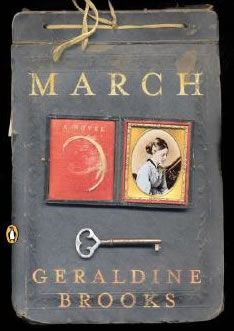The Portent
…[We] began to find that we doubted a great deal of what seemed to have happened to us. It was as if the gates of the unseen world were closing against us, because we had shut ourselves up in the world of the present. But we let it go gladly. We felt that love was the gate to an unseen world infinitely beyond that region of the psychological in which we had hitherto moved; for this love was teaching us to love all men, and live for all men.
–from George MacDonald’s The Portent
This passage sums up the central theme of George MacDonald’s “story of the inner vision of the highlanders commonly called the second sight.” Young Scotsman Duncan Campbell falls into a seemingly hopeless love for Lady Alice Hamilton, a beautiful and otherworldly figure who shares his heightened awareness of a portent: the clank of a galloping horse that always heralds disaster to the one who hears it. The two appear to be inextricably linked to a pair of lovers generations earlier who were destroyed by the jealous fury of the slighted brother. The woodcut above (“The Portent,” by William James Linton, 1860) illustrates the dramatic moment when one brother plunges to his doom before the flailing hooves of the other brother’s horse, while the maiden, soon to die herself, listens in horror.
In the hands of George MacDonald, this drama becomes more meaningful than such a summary might at first suggest. It seems that the “second sight” might suggest something parallel to the eye of faith that can penetrate into the spiritual realm. The lines above reveal that love takes the pair beyond the merely psychological “unseen world” of the portent into the spiritual world of real transformation.
Exciting though the tale of the two lovers and the jealous brother is, little happens between Duncan and Lady Alice except for clandestine meetings within various enclosures — a common mind symbol in 19th-century stories. There was a fascination with the idea of the unconscious, introduced before Freud by the German philosophers and elaborated in English by Coleridge, whose writings MacDonald greatly admired. The Portent is full of the idea that we are driven by mysterious and hidden forces within, and the imagery helps carry this forward. Duncan’s closet in the Gothic mansion where he serves as tutor and meets Lady Alice contains a hidden door into an unused wing; Lady Alice often sleepwalks through this door into his chamber, and the two find a haven in a “haunted room” in this secret wing. Not until they are driven out of these hidden, dark, dreamlike spaces so suggestive of the unconscious do they find a way to realize their love.
There may be an allegory about having to escape the claustrophobia of mere instinct, romance, or heritage in order to reach love. It reminds me of Erich Fromm’s words in The Art of Loving: “Love is not primarily a relationship to a specific person; it is an attitude, an orientation of character which determines the relatedness of a person to the world as a whole, not toward one ‘object’ of love.” For MacDonald, love is also the medium of relationship with God. The motif of waking from one dream into another, each one more “true” than the last, implies that what happens between the two lovers somehow reflects a larger metaphysical vision. Perhaps MacDonald is creating a picture of human beings with an unconscious mind that can control them only to an extent. Love is the gateway out — as Duncan explains in the excerpt above.
Dream, imagination, fate, love — all these are wrapped up in this novel that MacDonald called, apologetically, “a Romance. I am well aware that, with many readers, this epithet will be enough to ensure condemnation. But there ought to be a place for any story, which, although founded in the marvellous, is true to human nature and to itself.”


